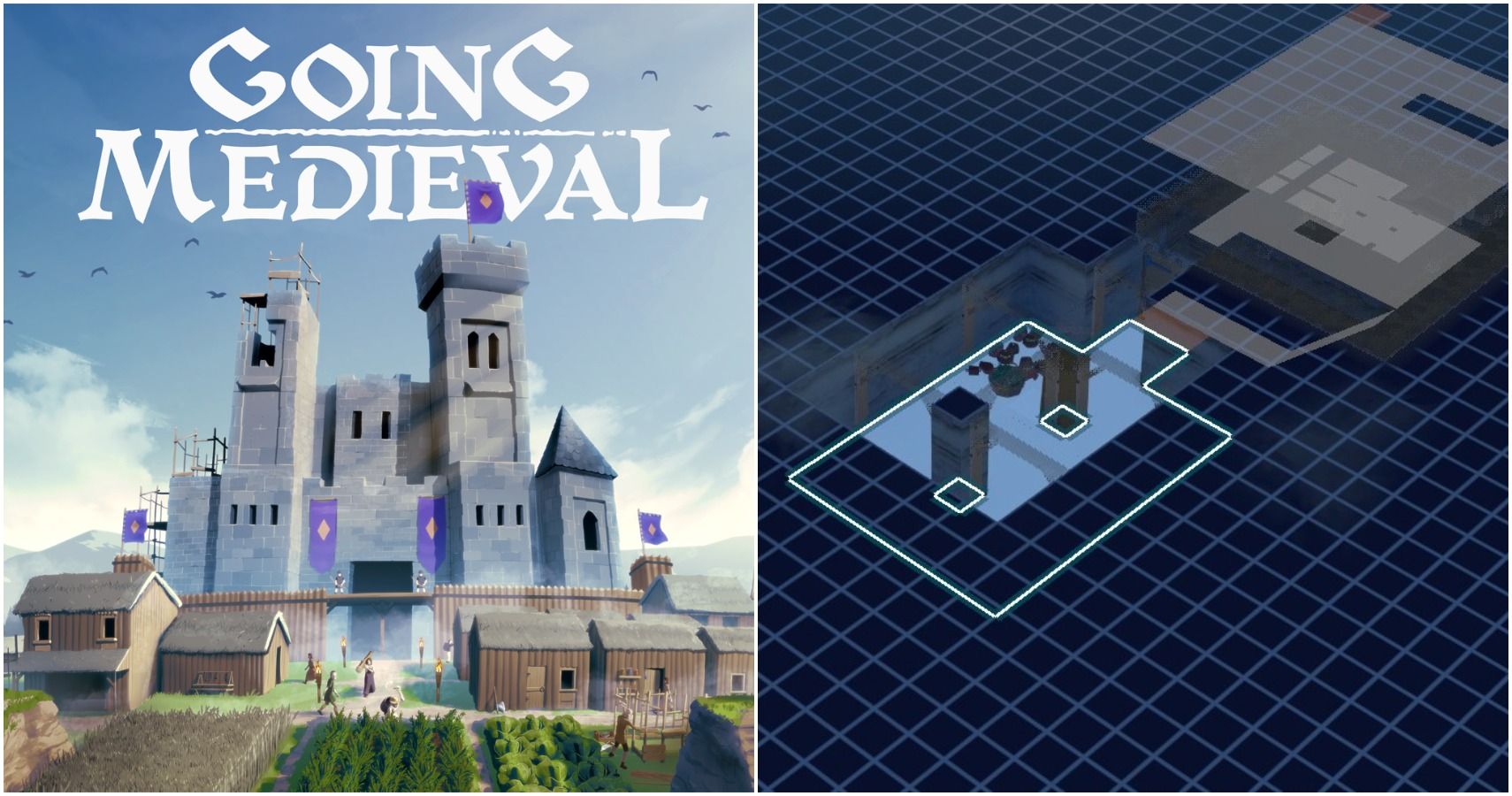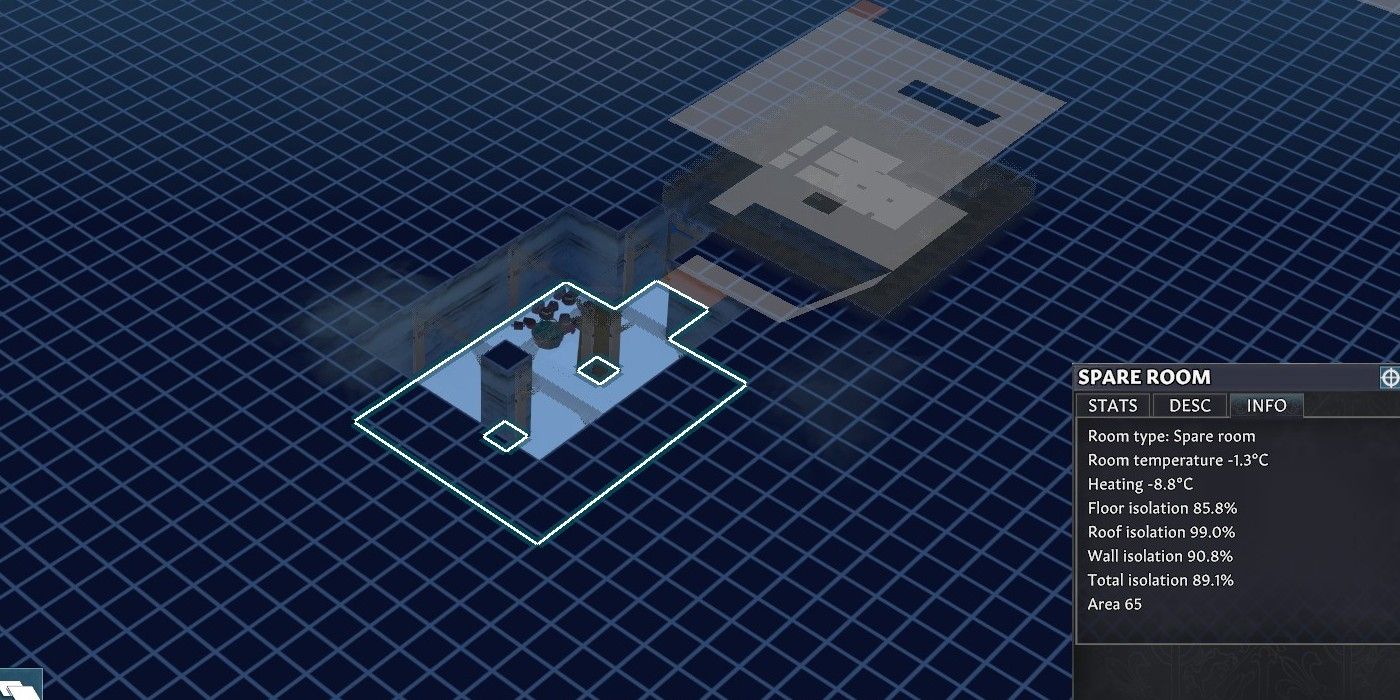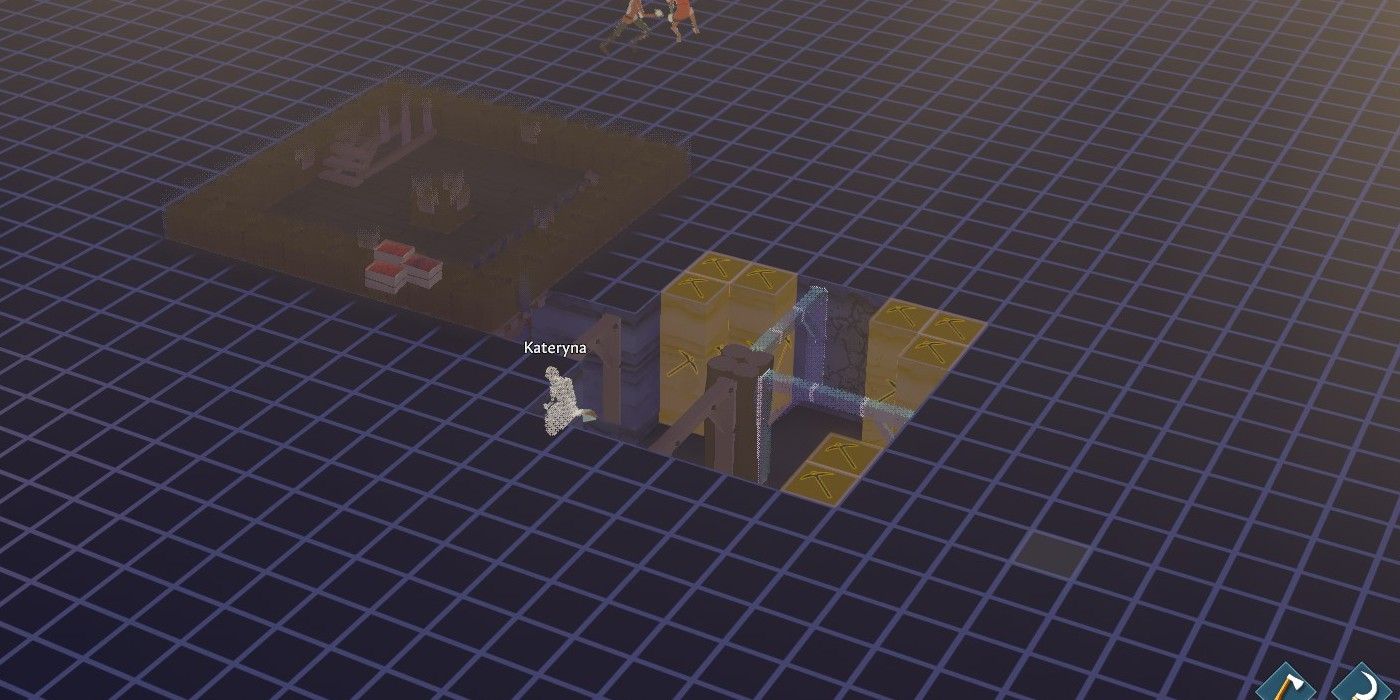Going Medieval lets you build across multiple layers. You can carve right into the side of mountains if you want to, for that real Dwarf Fortress colony-sim vibe. At some point, you will need to build underground — cellars were the Medieval equivalent to refrigerators, and your food is going to start to rot in the sun.
In Going Medieval, building underground is pretty straightforward once you've gotten used to it, but it can be a bit complicated for brand new players. This guide will cover how to navigate between the different layers in the game, what you need to do to build a successful cellar, and the easiest way to keep everything stable.
How To Build A Cellar In Going Medieval
So, first things first, it's summer and all your food is rotting on the stockpile. In Going Medieval, underground storage is the only way to stop this from happening, so you'll need to build a cellar. Here's how you do it.
Dig A Hole
This bit is simple. Just queue up a Mine order for one of your citizens (you can click on the Pickaxe in the bottom right of the screen) in a small square — a 6x6 should do fine for your first cellar. Depending on your citizen's mining skill, and whether you've decided to hack into iron rather than dirt, this shouldn't take more than a day to complete. Ideally, you want the room to be at least two levels down. The first level into the ground will not get as cold as the second layer.
Place A Staircase Into The Hole
To let your citizens clear out the bottom of the pit, and to be able to put things in it later, you will need a staircase. You can navigate between the surface layer and the underground layer by using Z and X on your keyboard, or by holding CTRL and using the middle mouse button.
Cover The Floor With Wood
Stockpiles perform better when placed on wood. You wouldn't want to put your roasted meat in the dirt, would you? This should prevent the food from rotting. However, wood can raise the temperature of the room. You should only place the wood underneath the stockpile. A good idea is to have a small, off-shoot room that just has a simple dirt floor. This almost acts like air-conditioning and brings the overall temperature of the room down.
Place Down A Stockpile For Food Only
Most materials don't mind being out in the heat, like your piles of ore and wood, for example, so make sure to set the stockpile for only food and carcasses. You can do this by clicking on the stockpile with a right-click. You might have to click around the resources, as it's easy to select the piles of rock by accident.
Place Wood Floor Over The Cellar
To enclose your cellar keep out the heat, you can place down wooden flooring over the top. This will keep the temperature down and let your citizens walk over the cellar. This also means you can build around the cellar eventually, like putting all your cooking stations right above where you store the food. You can also put a table in the room above to make it easier for your villagers to get to the food.
Building Big Underground Rooms In Going Medieval
Building any type of large underground room in Going Medieval is basically the same as above, although you will need beams to add Stability to anything larger. Adding beams is easy — you just need to put it against one wall and it will automatically place a beam to the next closest opposite wall.
Managing insulation and heating is essential to keep your underground rooms cool during the winter. There is actually quite a sophisticated insulation system in Going Medieval.
Some things to remember:
- Put too much wood down, for example, and your room will be too hot. For small rooms, it's okay to have mostly wood, but much larger rooms will need a balance between wooden floors and dirt to remain cold.
- Stability is also very important. Beams and pillars are crucial for large basements. A central pillar with beams surrounding it is a good method to create a stable, large underground room. If a room or cellar is not stable enough, it can cause cave-ins and even total collapse of nearby cliffs and caves.
- Building into a cliff is not necessarily a good method to create a cellar for cooling food. It is still on the ground level, which means it is surrounded by the surface air temperature of buildings and the earth around it.
- You do need to separate underground rooms with doors. Building a multi-layer cellar does not necessarily mean the lower room will be any cooler than the higher-level room. This is because the room's stats are shared, even if they look like they are separate areas. A simple door between the two areas is enough to prevent this.
Side note: There's one other thing to keep in mind: in the current version of the game, it is not possible to refill any holes you dig. You can use a placeholder of clay walls to fill up big holes, but this can look a bit rough around the edges. Be careful where you dig, for now!



